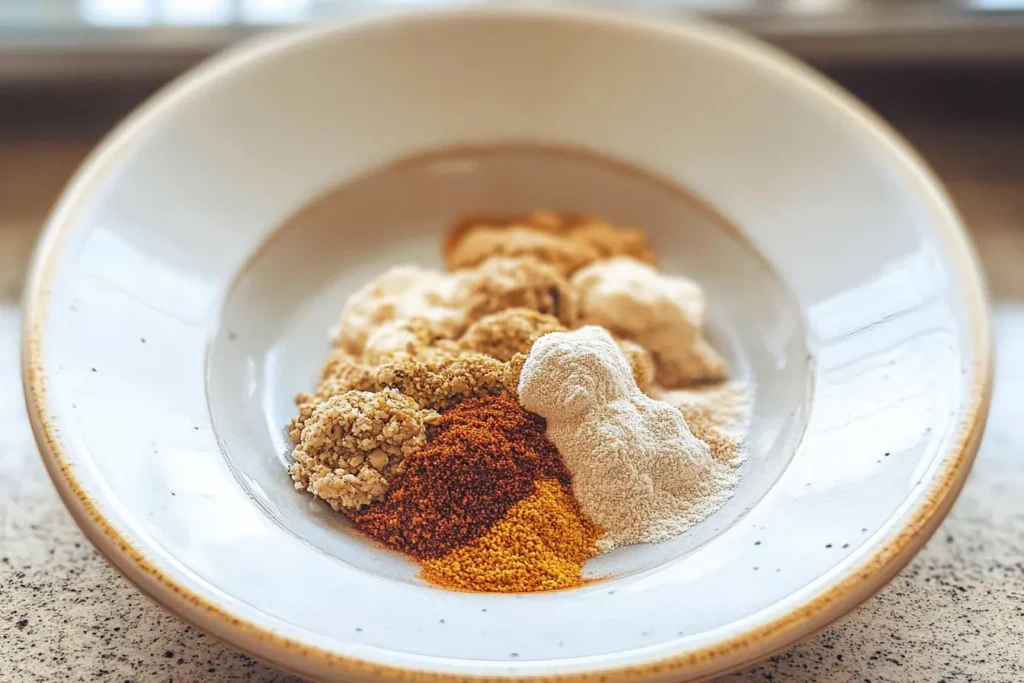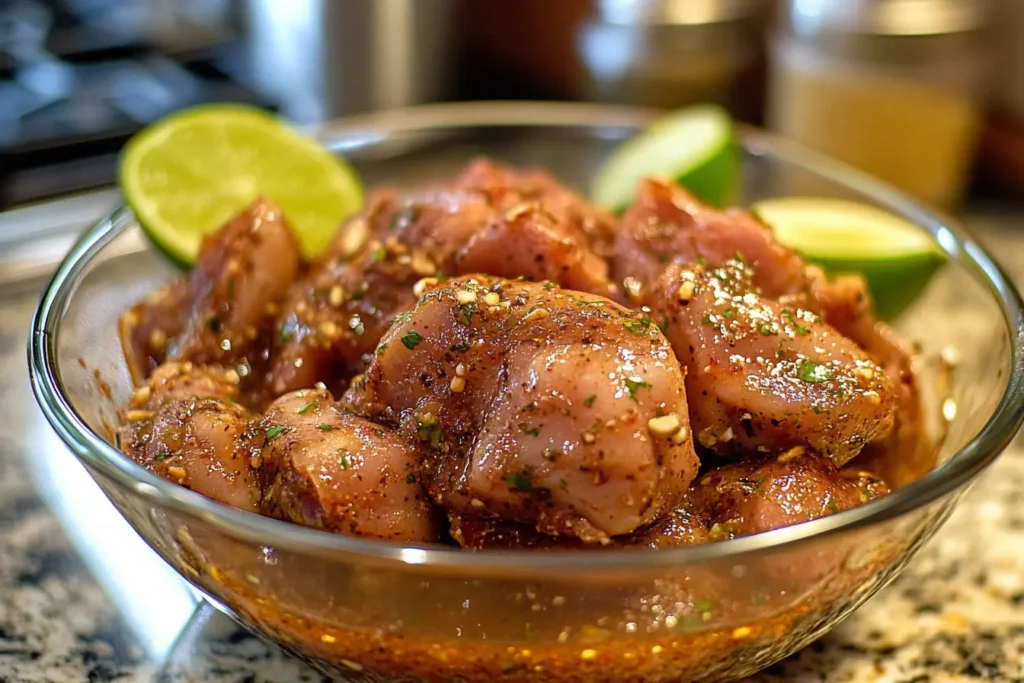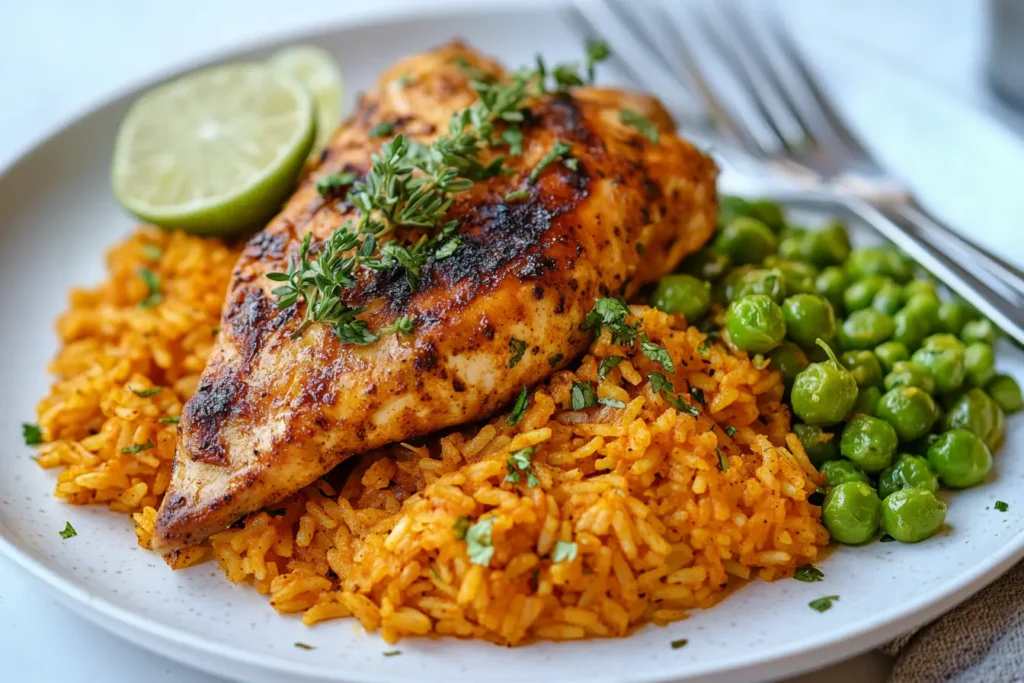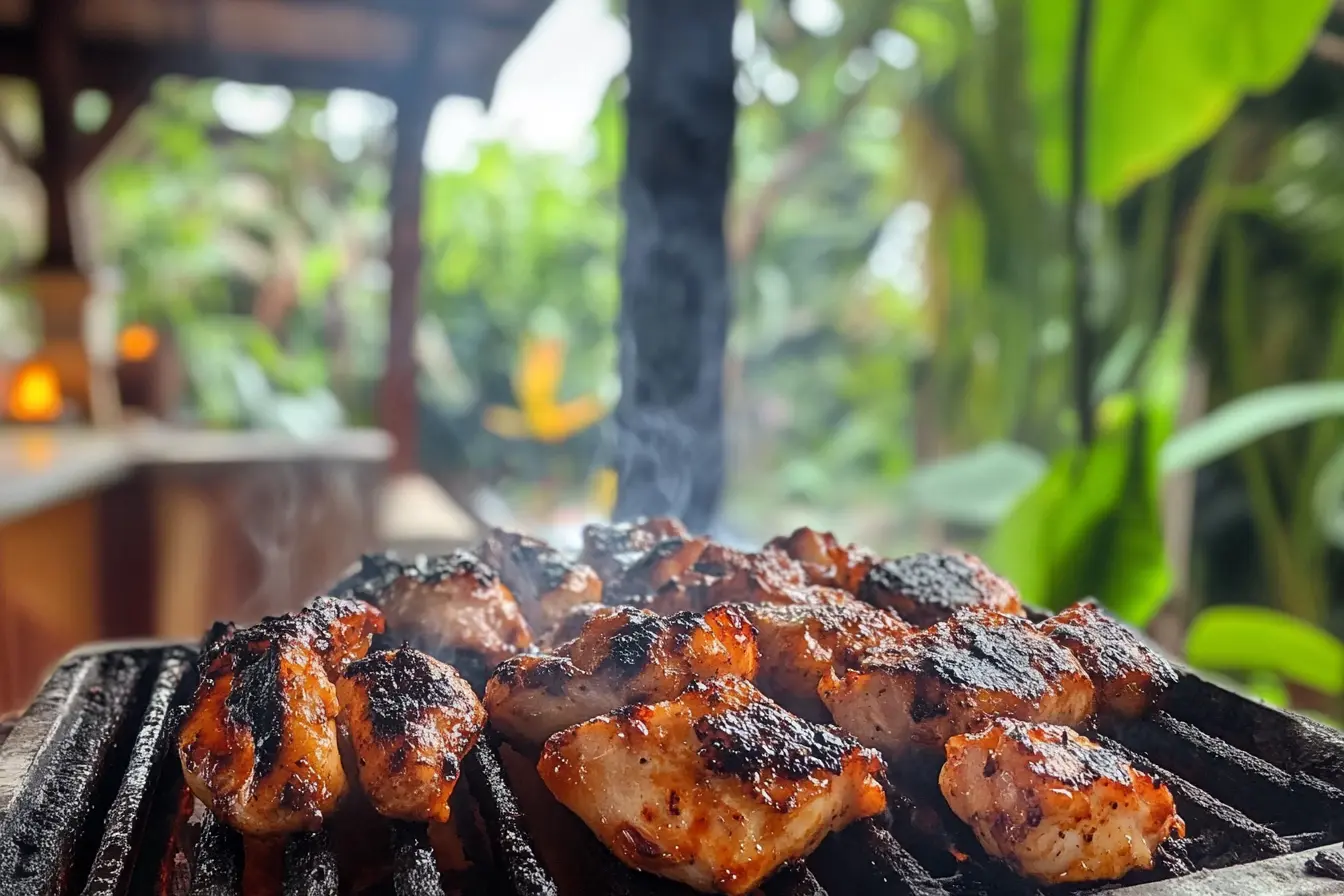Introduction
When it comes to bold and flavorful dishes, jerk chicken takes center stage. But here’s the burning question: Is jerk chicken spicy? The answer lies in its unique combination of ingredients and preparation techniques that pack a punch. This article dives deep into the origins, spice levels, and versatility of this iconic Jamaican dish. We’ll also explore how you can tweak its heat to suit your palate while celebrating its cultural significance. So, buckle up as we unravel the mystery behind jerk chicken’s spicy reputation!
Introduction and Overview
The Origins of Jerk Chicken
Jerk chicken is more than just a dish; it’s a slice of history! Originating from Jamaica, this culinary masterpiece traces back to the Maroons, escaped African slaves who blended their traditional cooking methods with indigenous Taino techniques. The term “jerk” refers to a style of cooking in which meat is dry-rubbed or marinated with a spicy mixture called jerk seasoning.
History of Jerk Cooking in Jamaica
The Maroons were resourceful. Using pit ovens and fragrant wood like pimento, they created a method to preserve and flavor meat. This was not only practical but also incredibly delicious. Over time, this technique evolved into the jerk cooking style we know today.
Ingredients and Their Unique Influence
The magic of jerk chicken lies in its ingredients. Scotch bonnet peppers, known for their fiery heat, combine with allspice, thyme, and other herbs to create a distinctive taste. These flavors don’t just bring heat; they create a symphony of smoky, sweet, and spicy notes that tantalize the taste buds.
What Makes Jerk Chicken Unique?
Jerk chicken stands out due to its bold flavor profile and cultural roots. But what exactly makes it so special?
The Spice Blend: A Deep Dive into Jerk Seasoning
At the heart of this dish is the jerk seasoning. This blend includes not only the infamous Scotch bonnet peppers but also allspice berries, cinnamon, and nutmeg. These ingredients come together to create a balanced yet fiery seasoning that defines jerk cuisine.
In the ensuing segment, we’ll delve into the heat factor of jerk chicken, exploring why it’s considered spicy and how its spice levels compare to other dishes. Stay tuned as we break down the fiery reputation of this Jamaican classic!
Understanding the Spice Levels in Jerk Chicken
Why Is Jerk Chicken Considered Spicy?
One of the reasons jerk chicken earns its spicy reputation is its signature seasoning. The combination of Scotch bonnet peppers and allspice creates a fiery base that sets this dish apart. These flavors don’t just overwhelm your palate—they’re balanced by smoky, earthy, and sweet undertones that make jerk chicken a delight for adventurous eaters.
Key Ingredients That Bring the Heat
- Scotch Bonnet Peppers: These small yet mighty peppers are the primary source of heat. Packed with capsicum, they lend a sharp, fruity spiciness.
- Allspice Berries: Often ground, these berries add warmth and a hint of clove-like flavor.
- Ginger and Garlic: These staples boost both spice and aroma.
Can You Make Jerk Chicken at Home?
Yes, and it’s easier than you think! Here’s a simple, step-by-step recipe that you can follow.

Ingredients
For the Jerk Seasoning:
- 2 Scotch bonnet peppers (adjust for heat preference)
- 1 tbsp allspice powder
- 1 tsp cinnamon
- 2 tsp ground thyme
- 3 garlic cloves, minced
- 1-inch piece of fresh ginger, grated
- 2 tbsp soy sauce
- 2 tbsp lime juice
- 1 tbsp brown sugar
- 2 tsp smoked paprika
For the Chicken:
- 1.5 kg chicken (legs, thighs, or breasts)
- 2 tbsp olive oil
- Salt to taste

Cooking Instructions
- Prepare the Jerk Seasoning:
- In a blender, combine all the seasoning ingredients and blend until you have a smooth paste. Taste and adjust heat or sweetness as needed.
- Marinate the Chicken:
- Pat the chicken pieces dry with a paper towel.
- Rub the jerk seasoning generously over the chicken, ensuring every piece is coated.
- Place the chicken in a ziplock bag or bowl, cover, and refrigerate for at least 4 hours (preferably overnight).
- Cook the Chicken:
- Preheat your oven to 200°C (400°F) or prepare a grill for medium-high heat.
- If grilling, oil the grill grates to prevent sticking. Cook the chicken for 20-25 minutes on each side, turning occasionally, until the internal temperature reaches 75°C (165°F).
- If using an oven, place the chicken on a baking tray lined with foil. Roast for 35-40 minutes, basting with any leftover marinade halfway through.
- Serve:
- Let the chicken rest for 5 minutes before serving. Pair it with rice and peas or a fresh green salad for a complete meal.
Nutritional Content
Per 100g of Jerk Chicken
| Nutrient | Amount |
|---|---|
| Calories | 200 kcal |
| Protein | 22 g |
| Fat | 10 g |
| Carbohydrates | 5 g |
| Fiber | 1 g |
| Sodium | 500 mg |
In the subsequent chapter, we’ll explore how to adjust the spice levels of jerk chicken to suit your taste, whether you prefer a milder flavor or a fiery kick. Stay with us as we continue to unravel the secrets of this iconic dish!
Customizing the Spice Level
Can Jerk Chicken Be Made Less Spicy?
Not everyone is a fan of fiery heat, and that’s perfectly fine! You can easily tone down the spice in jerk chicken without sacrificing its delicious flavor. By tweaking a few ingredients or cooking techniques, you can enjoy a milder version of this Jamaican classic.
Substitutes for Scotch Bonnet Peppers
Scotch bonnet peppers are the main heat source in jerk seasoning, but there are milder options:
- Jalapeño Peppers: Less intense but still provides a hint of spice.
- Bell Peppers: Perfect for a completely heat-free version.
- Poblano Peppers: A mild choice with a slight smoky flavor.
Cooking Techniques to Tone Down Spice
- Dilute the Heat: Adding more lime juice, brown sugar, or coconut milk can balance the spice.
- Remove Pepper Seeds: The seeds and white membranes of peppers contain the most heat. Removing them reduces the kick.
- Limit Marination Time: A shorter marination period will lessen the absorption of the spicy seasoning.
Recipes for Mild Jerk Chicken
Here’s a quick tip for crafting a milder recipe:
- Replace Scotch bonnet with jalapeños or use only half the recommended amount.
- Increase the sweet ingredients, such as brown sugar or honey, to balance the heat.
- Pair with cooling sides like cucumber salad or plain rice for a more subtle experience.
Making Jerk Chicken Spicier for Heat Lovers
For those who love bold, fiery flavors, here’s how to dial it up a notch:
Adding Extra Scotch Bonnet Peppers
- Use up to four Scotch bonnet peppers if you’re looking for an intense kick.
- Crush the peppers instead of blending to release even more heat into the seasoning.
Other Ingredients to Amplify Heat
- Cayenne Pepper: A great addition for layering heat.
- Chili Oil: Drizzle over the chicken after cooking for an extra burst of spiciness.
- Black Pepper: While not as fiery, it enhances the overall spiciness.
Advancing to the next topic, we’ll explore the cultural significance of jerk chicken and its role in Jamaican and global cuisine. From festivals to international variations, this dish carries a story worth savoring!

The Cultural Significance of Jerk Chicken
The Role of Spice in Jamaican Cuisine
Jamaican cuisine is famous for its bold flavors, and jerk chicken is no exception. The liberal use of spices isn’t just about flavor; it’s deeply rooted in the island’s history and traditions.
Symbolism of Spice and Bold Flavors
Spice in Jamaican food symbolizes vibrancy, resilience, and creativity. For centuries, the people of Jamaica have used local ingredients to create dishes that tell their stories. Jerk chicken, with its fiery yet balanced seasoning, represents this ingenuity. It’s a dish that speaks to survival, adaptation, and celebration.
Jerk Chicken at Jamaican Festivals and Gatherings
From street vendors to grand celebrations, jerk chicken is a centerpiece of Jamaican culture.
- Festivals: Events like the Jamaica Jerk Festival highlight the dish’s significance and bring communities together.
- Gatherings: Be it a family barbecue or a beach party, jerk chicken is a must-have dish that fosters a sense of togetherness.
Jerk Chicken in Global Food Culture
The popularity of jerk chicken has spread far beyond Jamaica, captivating food lovers worldwide. Its adaptability and flavor profile make it a global favorite.
How the Spice Appeals to International Palates
The smoky, sweet, and spicy flavors of jerk chicken appeal to a diverse range of tastes. Many chefs adapt the dish by using locally available ingredients while retaining its essence, making it accessible to different cultures.
Popular Variations of Jerk Chicken Worldwide
- American Fusion: Jerk chicken tacos and wraps have become trendy menu items.
- European Twists: In places like London, jerk chicken is often served with Caribbean-inspired sides like plantains and coleslaw.
- Asian Influence: In fusion cuisine, jerk chicken is paired with rice noodles or stir-fried vegetables for a unique spin.
Frequently Asked Questions (FAQ)
How to Make Chicken Pieces Tender?
Tender chicken is all about preparation and cooking methods:
- Marination: Use acidic ingredients like yogurt, lime juice, or vinegar in your marinade to break down proteins and make chicken tender.
- Brining: Soak chicken in a saltwater solution for at least 30 minutes before cooking. This adds moisture and prevents dryness.
- Low and Slow Cooking: Cooking chicken on low heat for longer ensures that the meat stays juicy and tender.
How to Mash Raw Chicken?
Mashing raw chicken is a handy technique for recipes like chicken meatballs or patties. Here’s how to do it:
- Cut Into Small Pieces: Dice the chicken into smaller chunks for easier mashing.
- Use a Food Processor: Pulse the chicken until it reaches a mashed or ground consistency.
- By Hand: If you don’t have a processor, place the diced chicken in a ziplock bag and use a rolling pin to mash it.
How to Cook Chicken Like a Chef?
Cooking chicken like a pro is all about attention to detail and technique:
- Season Generously: Don’t skimp on seasoning. Salt, pepper, and herbs can transform a dish.
- Sear for Flavor: Always sear chicken on high heat for a crispy, caramelized exterior before cooking it through.
- Use a Thermometer: Ensure the chicken’s internal temperature reaches 75°C (165°F) to avoid over- or undercooking.
- Rest the Meat: Let cooked chicken rest for 5-10 minutes to retain its juices.
What Is the Best Way to Cook Diced Chicken?
Diced chicken is versatile and quick to cook. Here are the best methods:
- Stir-Fry: Cook in a hot skillet with minimal oil, stirring frequently to ensure even cooking.
- Bake: Coat diced chicken in spices or marinade, then bake at 200°C (400°F) for about 15-20 minutes.
- Grill: Thread diced chicken onto skewers and grill for a smoky flavor.
Is Diced Chicken Healthy?
Yes, diced chicken is a healthy option! Here’s why:
- High in Protein: Chicken is an excellent source of lean protein, promoting muscle growth and repair.
- Low in Fat: Especially if you use skinless chicken, it’s low in saturated fats.
- Versatile: Diced chicken can be paired with a variety of vegetables and whole grains for balanced meals.

